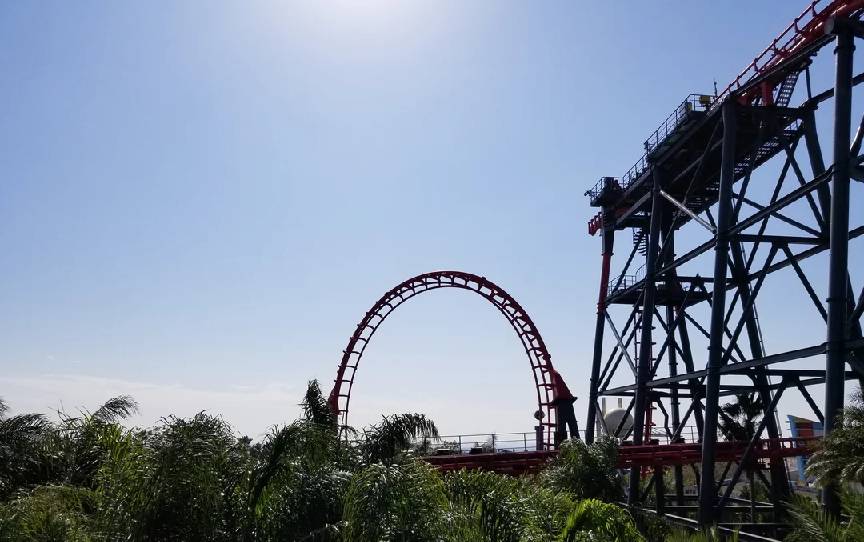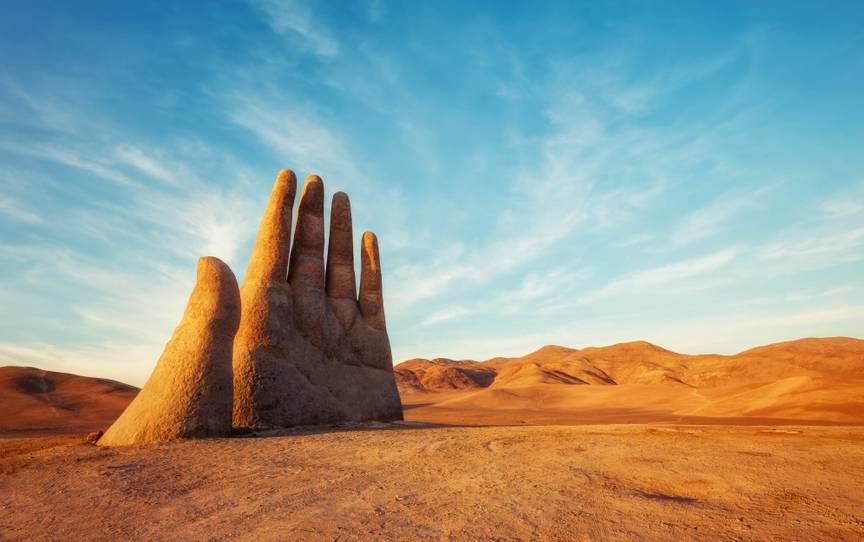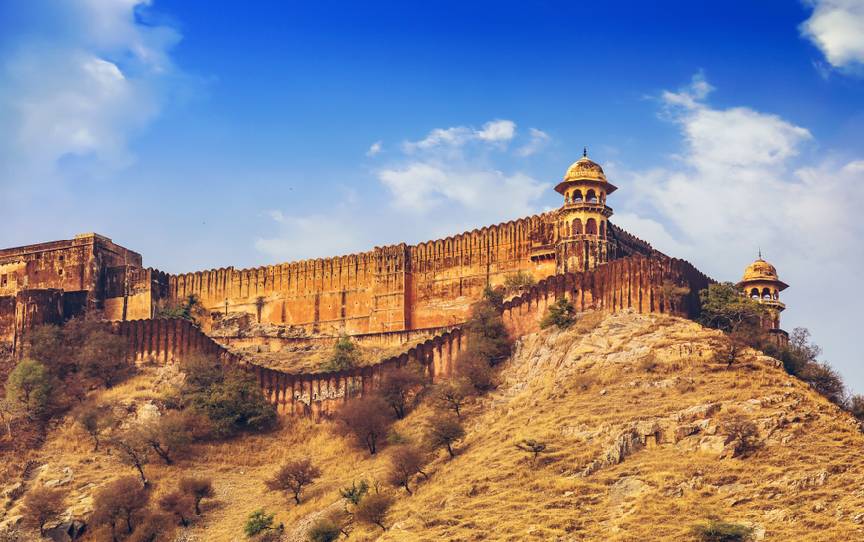
Embark on a regal sojourn through the resplendent Pink City, where every cobblestone whispers tales of valor and grandeur. Jaipur, the crown jewel of Rajasthan, is a canvas painted with the hues of heritage, history, and hospitality. Nestled in the lap of the Aravalli Hills, Jaipur unfolds as a treasure trove of architectural marvels, cultural splendors, and culinary delights. In this guide, we unveil the top ten tourist places in Jaipur, each a gem reflecting the city’s royal legacy. From timeless forts perched on rugged hills to opulent palaces echoing the footsteps of kings, join us on a virtual odyssey through the majestic realms of Jaipur’s most enchanting destinations.
Hawa Mahal (Palace of Winds)
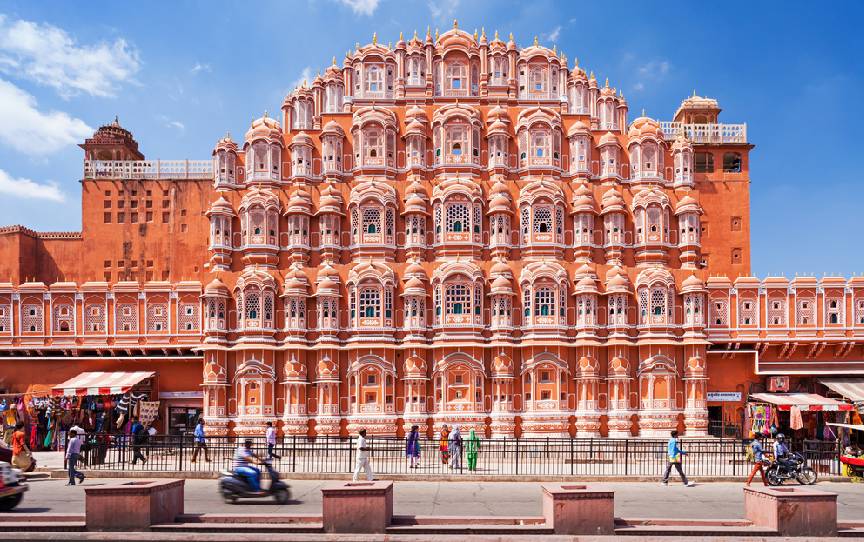
Hawa Mahal, also known as the Palace of Winds, stands as an exquisite marvel of architecture in the heart of Jaipur. Constructed in 1799 by Maharaja Sawai Pratap Singh, this five-story structure is adorned with intricate latticework and boasts 953 small windows, allowing the royal ladies to observe the bustling street life below. The pink sandstone facade, a signature feature of Jaipur, makes Hawa Mahal an iconic symbol of the city’s rich history and architectural finesse. It is one of the best place to visit in Jaipur where visitors can explore the various chambers, take in panoramic views, and immerse themselves in the royal ambiance.
Best For: Solo travelers seeking historical immersion and photography enthusiasts who wish to capture the delicate beauty of this iconic landmark.
Amber Fort (Amer Fort)
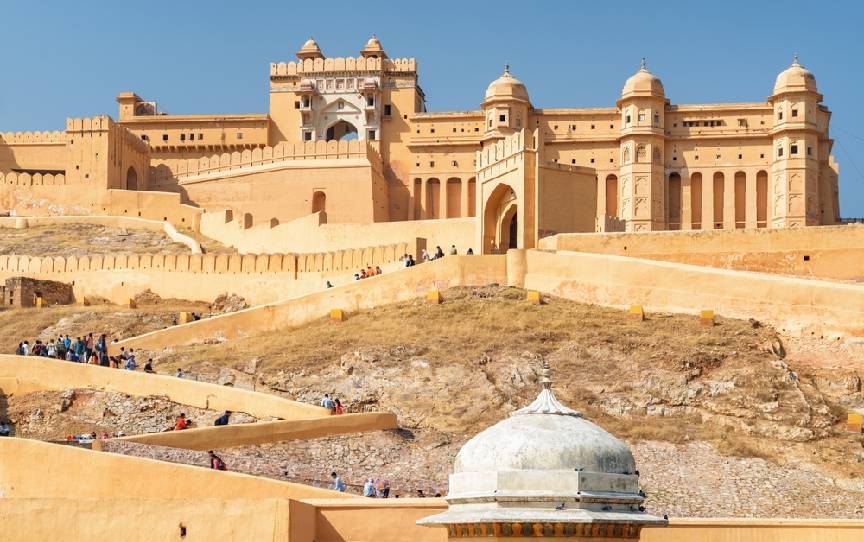
Nestled in the rugged Aravalli hills, Amber Fort, also known as Amer Fort, is a majestic fortress that narrates tales of Rajputana grandeur and opulence. Built in the 16th century by Raja Man Singh I, the fort is a splendid blend of Hindu and Rajput influences. As visitors ascend to the fort on the back of an elephant or through the imposing Sun Gate, they are greeted by sprawling complexes, ornate palaces, and intricately designed courtyards. The Sheesh Mahal, Diwan-i-Khas, and the Ganesh Pol are major highlights that showcase the architectural brilliance of a bygone era.
Every corner of Amber Fort unfolds a different chapter of history, making it a must-visit among the myriad things to see in Jaipur with friends and family. The architecture, the stories, and the panoramic views from its ramparts create an immersive experience that transports visitors to the opulent era of the Rajput kings. As you explore Amber Fort, you step into a living museum that captures the essence of Rajasthan’s rich cultural heritage.
Best For: Friends seeking adventure in exploring historical forts and history buffs who wish to delve into the royal legacy of Jaipur.
City Palace
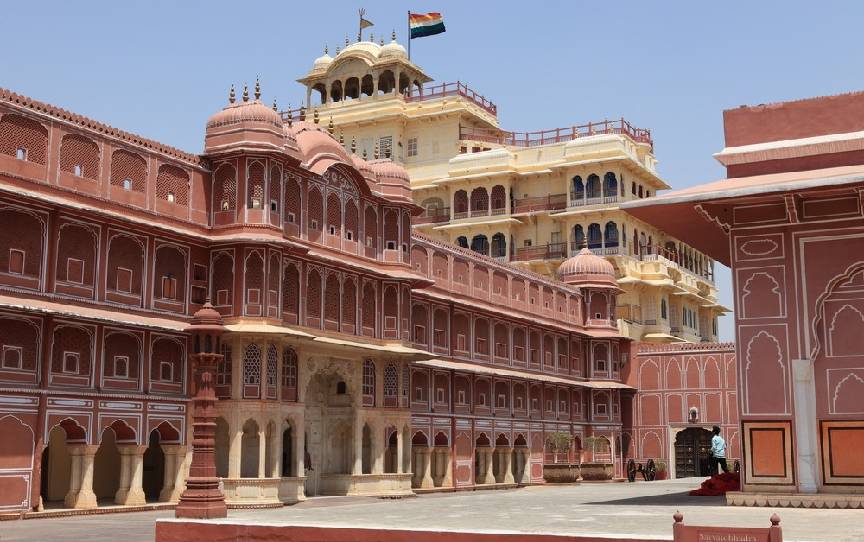
The City Palace of Jaipur stands tall as a living testament to the grandeur of the royal families, securing its place as one of the most remarkable historical places in Jaipur. Built by Maharaja Sawai Jai Singh II, this palace is a magnificent blend of Rajasthani, Mughal, and European architectural styles. The complex encompasses a series of courtyards, gardens, and buildings, among which the Chandra Mahal and Mubarak Mahal are prominent.
The Palace Museum, nestled within the complex, houses a vast collection of royal artifacts, costumes, and manuscripts. It serves as a treasure trove for history enthusiasts, showcasing the opulence and cultural heritage of Jaipur’s regal past. The intricate detailing and vibrant colors that adorn the palace, coupled with the reflective Pitam Niwas Chowk, make the City Palace a captivating journey through time.
For those with an appreciation for history, the City Palace is not just a physical structure; it is a narrative of Jaipur’s rich history and the lives of the royalty who once walked its halls. Visiting this historical gem provides a unique opportunity to immerse oneself in the grandeur and cultural richness of Rajasthan.
Best For: Families interested in history and architecture aficionados who appreciate the fusion of different architectural styles.
Jantar Mantar
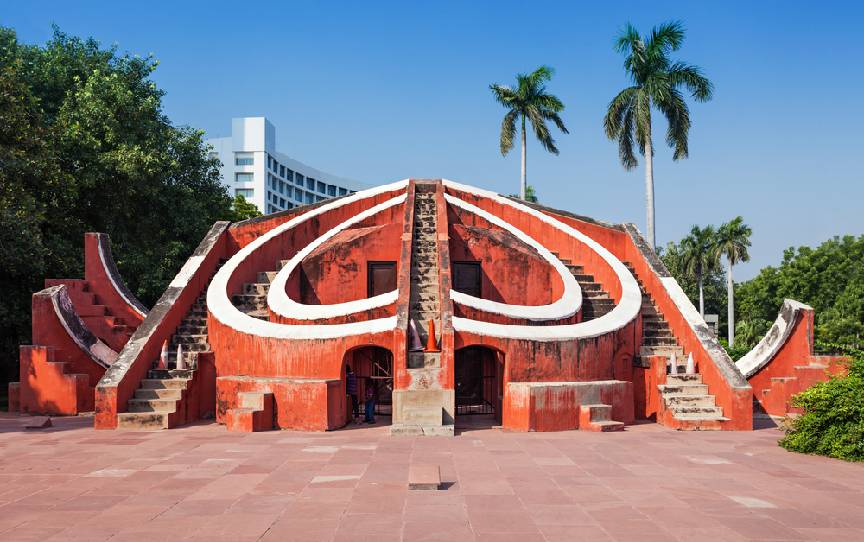
Jantar Mantar, nestled in the heart of Jaipur, stands as a testament to the astronomical prowess of ancient India. This UNESCO World Heritage Site was crafted by Maharaja Sawai Jai Singh II in the early 18th century, embodying a confluence of art, science, and heritage. As one of the top tourist places in Jaipur, Jantar Mantar invites visitors to traverse through time and marvel at its nineteen exquisite astronomical instruments.
The centerpiece of this celestial symphony is the Samrat Yantra, proudly holding the title of the largest sundial globally. Its colossal structure and precise measurements showcase the ingenuity of the astronomers of its time. The Jai Prakash Yantra, another gem within Jantar Mantar, served as a celestial navigator, enabling the meticulous tracking of celestial bodies.
In the constellation of Jaipur’s top tourist places, Jantar Mantar shines as a beacon of scientific brilliance. This astronomical observatory not only mirrors the intellectual heights achieved by ancient Indian astronomers but also captivates modern-day explorers with its timeless allure. Embark on a celestial journey amidst historical marvels, making Jantar Mantar an indispensable celestial gem in the Pink City’s crown.
Best For: Solo travelers with an interest in astronomy and science enthusiasts exploring Jaipur’s scientific heritage.
Nahargarh Fort
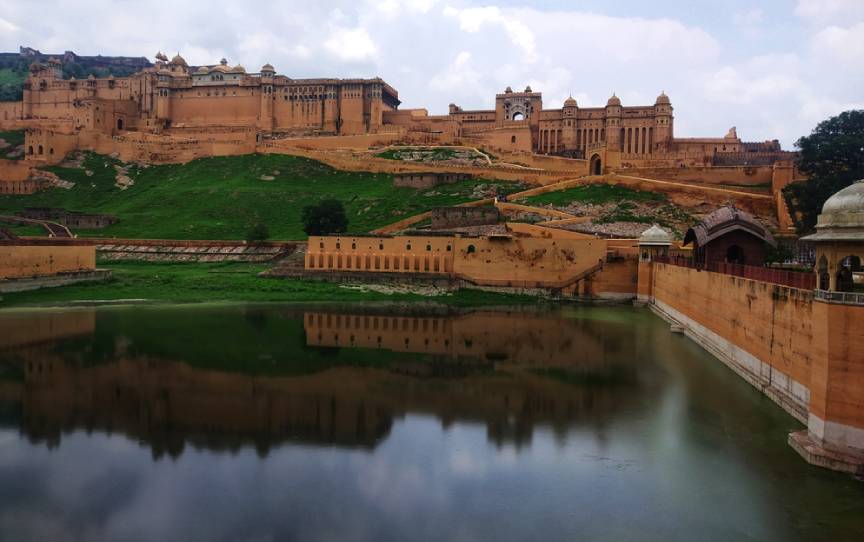
Nestled majestically on the rugged Aravalli hills, Nahargarh Fort isn’t just a historical marvel but a panoramic gateway to the Pink City’s splendor. Crafted in 1734 by the visionary Maharaja Sawai Jai Singh II, this fort wasn’t merely a fortress; it was a strategic masterpiece designed to safeguard the realm. Offering more than historical insights, Nahargarh Fort stands tall as the best Jaipur fort for sightseeing.
The fort’s architectural grandeur is showcased in the Madhavendra Bhawan, an interconnected series of suites crafted for the king and his queens. Beyond the historical allure, Nahargarh Fort welcomes visitors to explore hidden passages, relish the serene ambiance, and witness the breathtaking sunset that paints Jaipur in hues of gold.
Nahargarh Fort is a haven for sightseeing enthusiasts, history buffs, and those seeking a perfect blend of historical charm and panoramic vistas. It provides an unrivaled platform to witness the regality of Jaipur from a vantage point.
Nahargarh Fort stands tall not just in elevation but in its offering as the best Jaipur fort for sightseeing. Beyond the sturdy walls and historical tales, it unfolds a visual feast for those seeking the grandeur of the Pink City. A visit to Nahargarh Fort transcends time, making it an indispensable chapter in the exploration of Jaipur’s regal legacy.
Best For: Solo travelers seeking tranquility and photographers capturing the scenic landscapes of Jaipur.
Jaigarh Fort

Jaigarh Fort, often referred to as the “Fort of Victory,” stands atop the Cheel ka Teela (Hill of Eagles) overlooking Amber Fort. Built by Maharaja Sawai Jai Singh II, the fort is renowned for housing one of the world’s largest cannons, Jaivana. Visitors can explore the expansive fortifications, impressive gateways, and the museum displaying armory and artifacts. The panoramic views of the surrounding hills and Amber Fort from Jaigarh make it an engaging historical site.
Best For: History enthusiasts and those fascinated by military architecture, offering a blend of history and panoramic views.
Albert Hall Museum
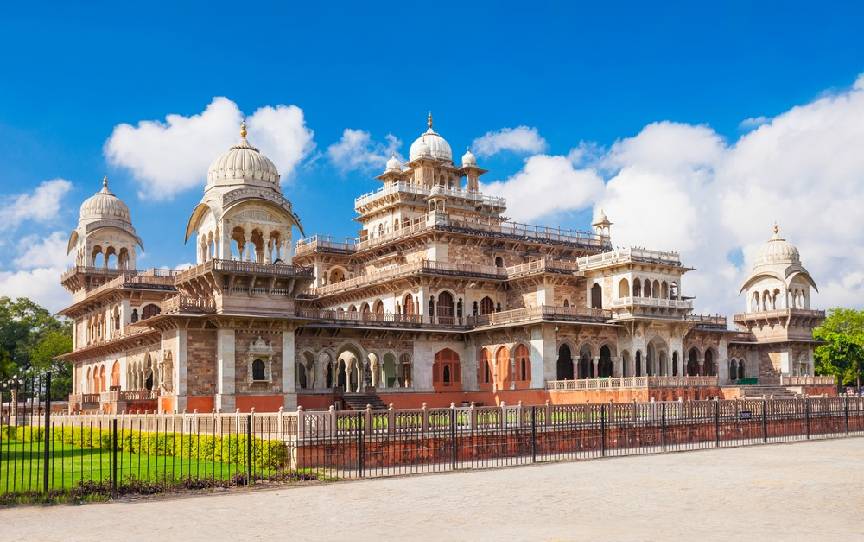
The Albert Hall Museum, situated in Ram Niwas Garden, is a treasure trove of art and artifacts. Designed by Sir Samuel Swinton Jacob and inaugurated as a public museum in 1887, it is the oldest museum in Rajasthan. The museum’s Indo-Saracenic architecture is a sight to behold. Inside, visitors can explore diverse exhibits, including sculptures, paintings, decorative arts, and an Egyptian mummy. The grandeur of the building and the richness of its collections make it a cultural haven in Jaipur.
Best For: Families interested in art and history, and art enthusiasts exploring a diverse range of exhibits.
Jal Mahal

Floating serenely in the midst of the Man Sagar Lake, Jal Mahal is a mesmerizing water palace. Built in the 18th century by Maharaja Madho Singh I, the palace appears to float when the lake is full. While the interiors are not open to the public, the picturesque setting and the palace’s reflection on the water make it a delightful visual spectacle. Visitors can enjoy boat rides on the lake and capture the palace’s beauty against the backdrop of the Aravalli hills.
Best For: Couples seeking a romantic boat ride and photographers capturing the scenic beauty of Jaipur.
Sisodia Rani Garden
Sisodia Rani Garden, located on the Jaipur-Agra highway, is a delightful garden retreat. Built by Maharaja Sawai Jai Singh II for his queen, the garden reflects the Mughal style with terraced levels, pavilions, and fountains. The garden is adorned with murals depicting the love story of Radha and Krishna, adding a romantic charm to the surroundings. It serves as a serene escape from the city’s hustle, making it an ideal spot for a peaceful stroll.
Best For: Couples seeking a tranquil garden setting and nature lovers appreciating Mughal-inspired landscapes.
Jawahar Circle
Jawahar Circle is a vast, circular park with lush greenery and a striking rose garden. The main attraction is the Patrika Gate, a nine-domed structure adorned with vibrant paintings showcasing Rajasthan’s culture. The park is a popular spot for locals and tourists alike, offering recreational activities, walking paths, and a vibrant atmosphere. Jawahar Circle is a perfect destination for relaxation and enjoyment.
Best For: Families seeking a recreational park experience and individuals looking for a leisurely stroll in a vibrant setting.
Jaipur, the Pink City, unfolds a tapestry of historical richness and architectural splendor. Each tourist destination offers a unique facet of Rajasthan’s cultural heritage, making it an ideal destination for solo travelers, families, and friends alike. Whether exploring the grandeur of City Palace or experiencing the tranquility of Sisodia Rani Garden, Jaipur promises an enchanting journey through time and beauty.
